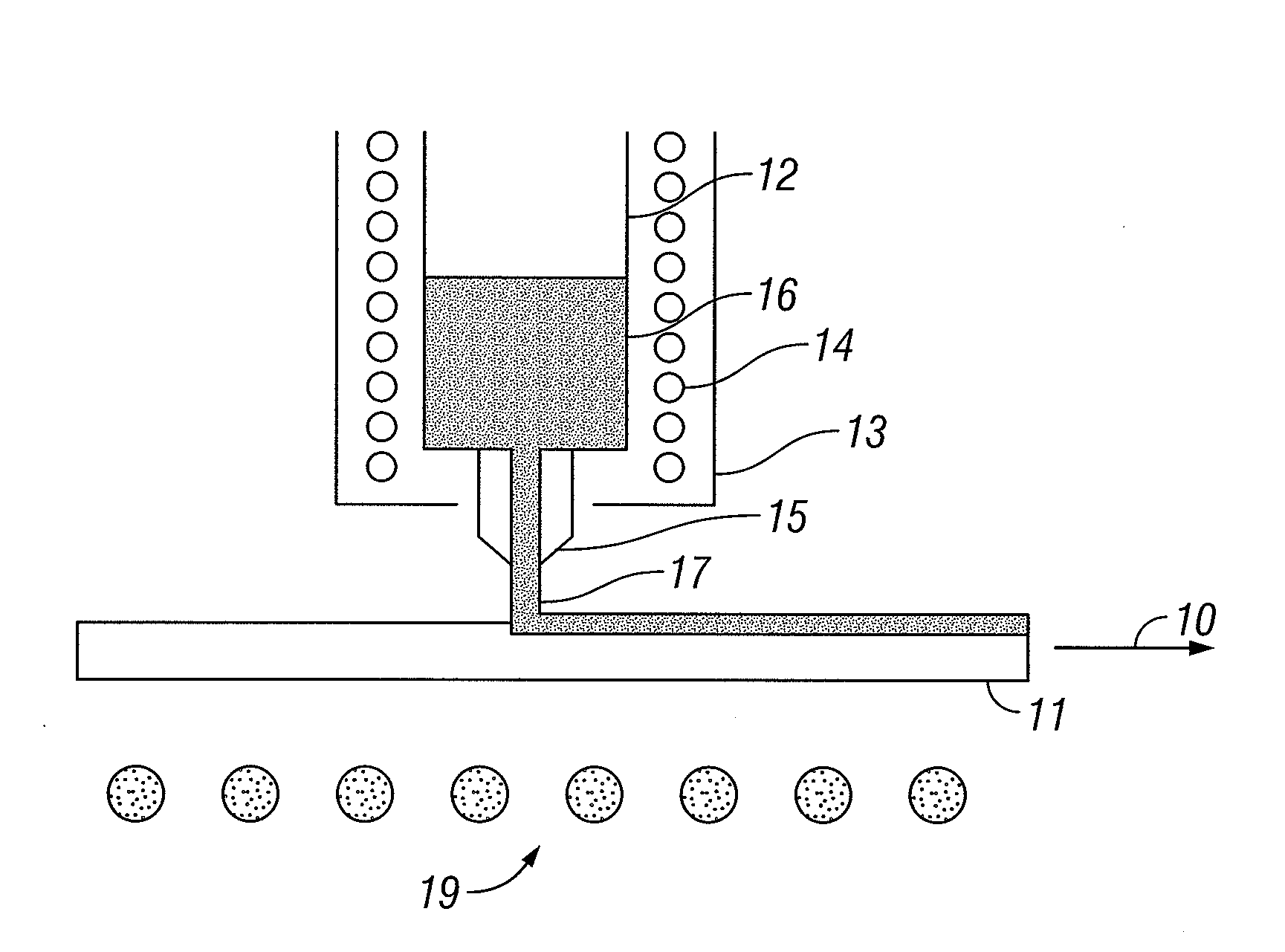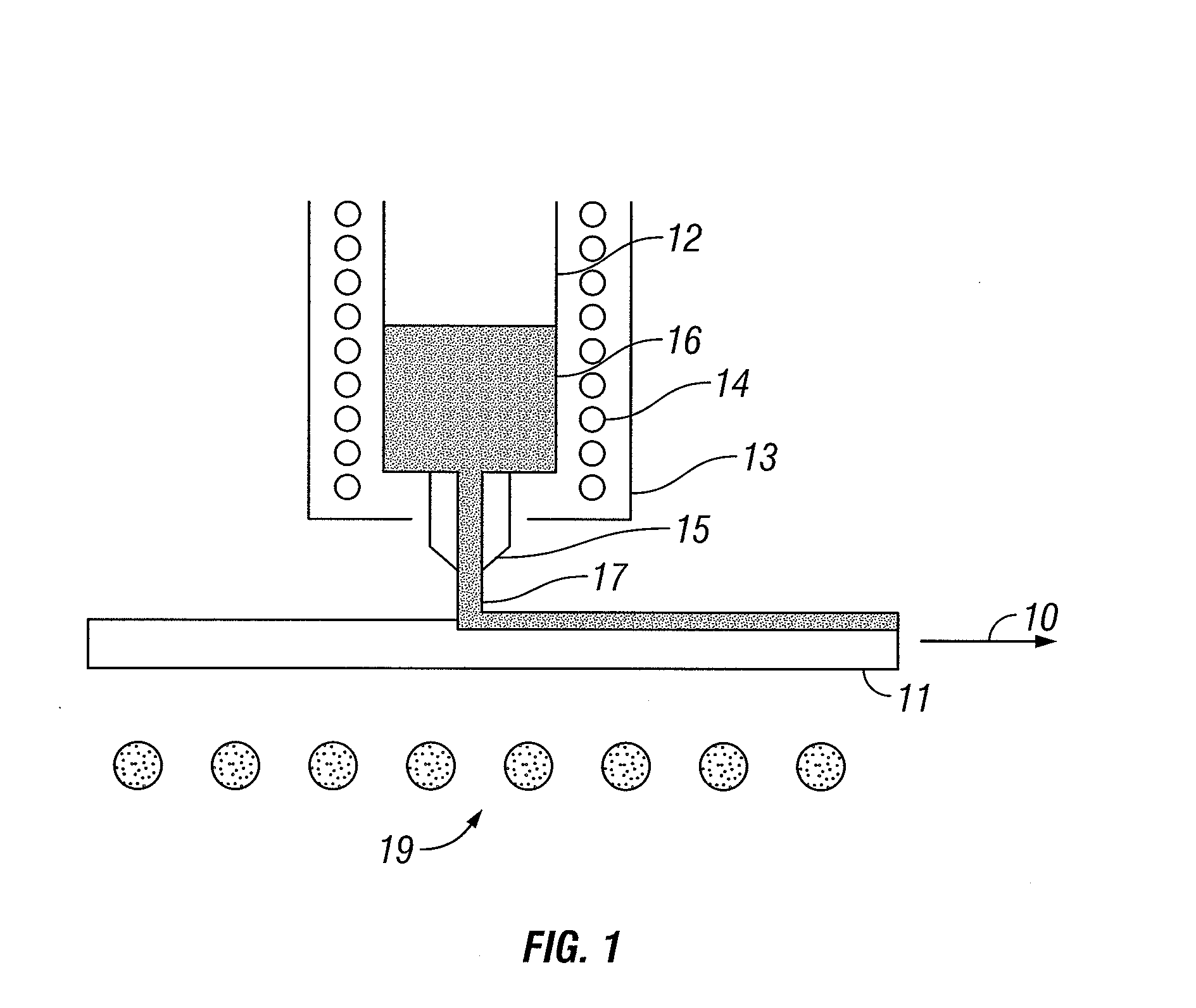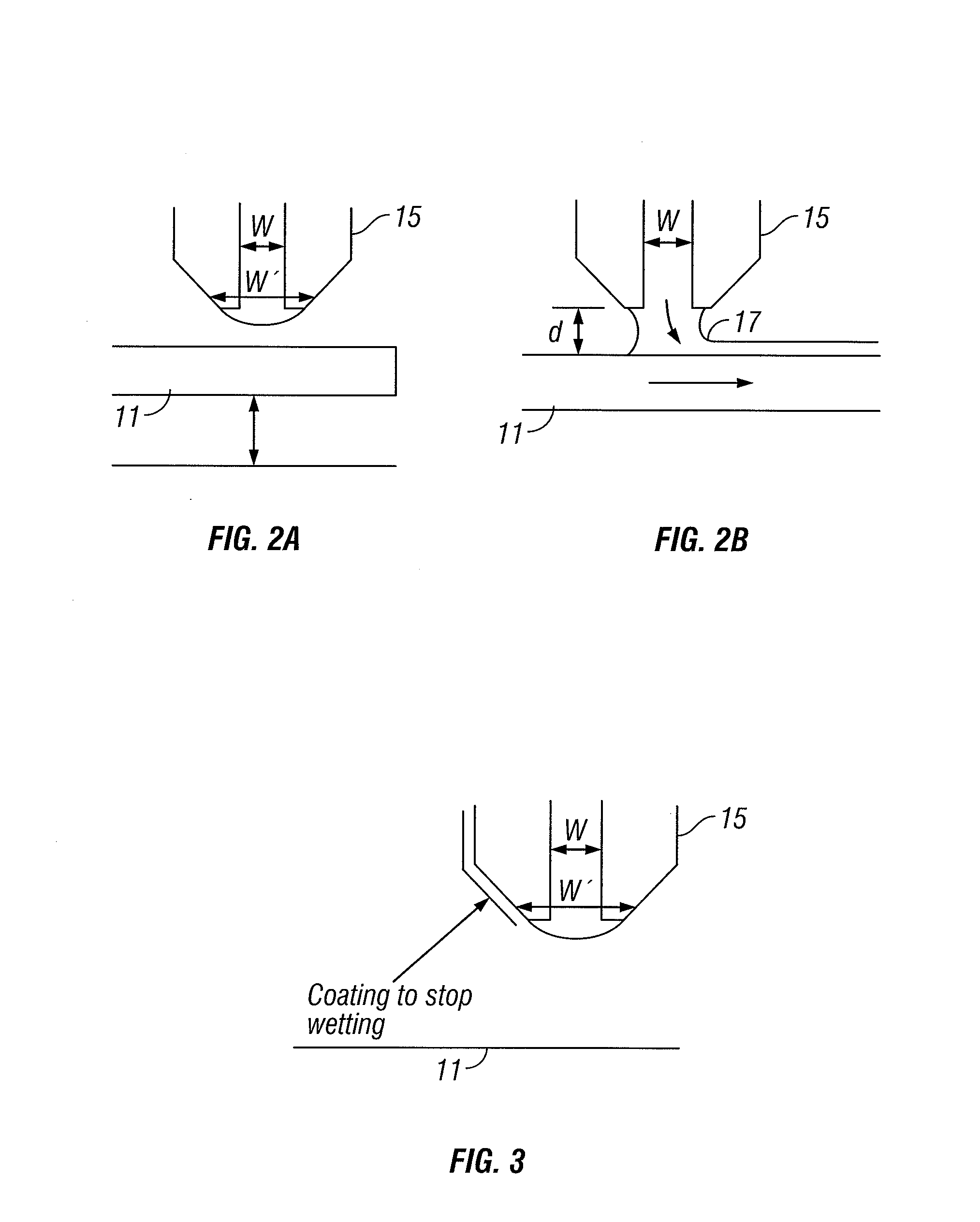Method for Rapid Liquid Phase Deposition of Crystalline Si Thin Films on Large Glass Substrates for Solar Cell Applications
a technology of crystalline si thin films and solar cells, applied in the direction of sustainable manufacturing/processing, final product manufacturing, coatings, etc., can solve the problems of low 14.78 tons of silicon needed, and 5-8% of the energy conversion efficiency of such cells, so as to increase the area throughput, the effect of equal energy conversion efficiency
- Summary
- Abstract
- Description
- Claims
- Application Information
AI Technical Summary
Benefits of technology
Problems solved by technology
Method used
Image
Examples
Embodiment Construction
[0025]The presently preferred embodiment of the invention comprises a method for liquid phase deposition of crystalline Si thin films onto glass. A solar cell that is fabricated using the invention disclosed herein has the performance of a crystal silicon solar cell, but at per unit area cost that is similar to that of a solar cell that is fabricated using an amorphous silicon thin film. In the fabrication of a conventional crystal Si solar cell, although the wafer thickness used is slightly below 200 μm, there are significant losses from raw material to the wafers, such as growth, cutting, and polishing. In the invention, the crystal thin film uses only 10% of the amount of silicon used by a wafer-based solar cell per unit area. The cell manufacturing process follows existing Si processing techniques. Because of the maturity of silicon technology in semiconductor industry, this approach not only enables high volume, automated production of solar cells on a very large, low-cost subs...
PUM
| Property | Measurement | Unit |
|---|---|---|
| thickness | aaaaa | aaaaa |
| thickness | aaaaa | aaaaa |
| grain size | aaaaa | aaaaa |
Abstract
Description
Claims
Application Information
 Login to View More
Login to View More - R&D
- Intellectual Property
- Life Sciences
- Materials
- Tech Scout
- Unparalleled Data Quality
- Higher Quality Content
- 60% Fewer Hallucinations
Browse by: Latest US Patents, China's latest patents, Technical Efficacy Thesaurus, Application Domain, Technology Topic, Popular Technical Reports.
© 2025 PatSnap. All rights reserved.Legal|Privacy policy|Modern Slavery Act Transparency Statement|Sitemap|About US| Contact US: help@patsnap.com



